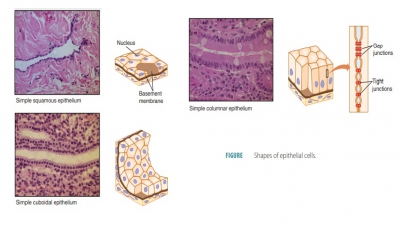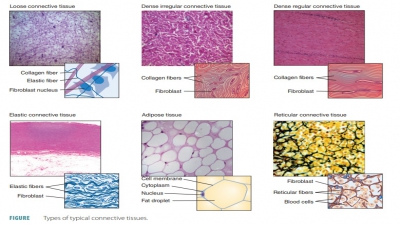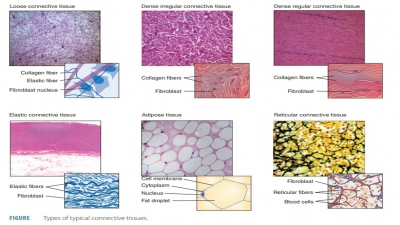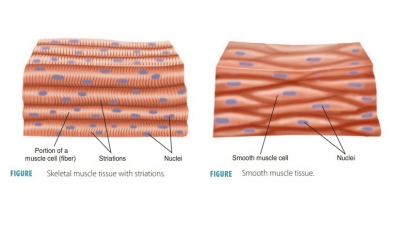Metabolism of Proteins
| Home | | Anatomy and Physiology | | Anatomy and Physiology Health Education (APHE) |Chapter: Anatomy and Physiology for Health Professionals: Levels of Organization : Cellular Metabolism
Proteins must also be broken down and replaced before they deteriorate.
Metabolism of
Proteins
Proteins must also be broken down
and replaced before they deteriorate. During their catabolism, con-tained amino
acids are recycled for use in building new proteins. They may also be modified
into different nitrogen-containing compounds. Active transport processes allow
the cells to absorb newly ingested amino acids from the blood. The cells can
then use the amino acids to replace tissue proteins. This occurs at a rate of
approximately 100 grams in 24 hours. Excess protein cannot be stored by the body. When excess protein is present, amino
acids are either oxidized for energy or converted to fat so they may be used
for energy in the future.
Oxidation of Amino Acids
Amino acids must be deaminated before they can be oxidized
for energy. To do this, their amine group (NH 2) must be removed.
The molecule that results is then converted to pyruvic acid or to a keto acid
inter-mediate during the Krebs cycle. These intermediates include acetyl CoA, α-ketoglutaric acid, fumaric acid, oxaloacetic acid, or succinyl CoA.
With amino acids that contain sulfur (cysteine, methionine, etc.), sulfur is
released before deamination occurs. Glutamic
acid is the key molecule used in the oxidation of amino acids. The
oxidation of amino acids occurs in the fol-lowing steps:
■■ Transamination: The reversible exchange of amino groups
between different amino acids. A variety of amino acids are able to transfer
their amine group to the Krebs cycle keto acid known as α-ketoglutaric acid. Then, this acid is transformed to glutamic acid. The original amino acid
there fore becomes a keto acid, having an oxygen atom in the place where the
amine group used to be.
■■ Oxidative deamination: The
oxidative breakdown of amino acids. Specialized enzyme systems carry out the
process such as d-amino oxidase. The
amine group of glutamic acid is removed in the liver as ammonia (NH3).
Regeneration of α-ketoglutaric acid occurs. The freed ammonia molecules combine with
carbon dioxide to yield urea and water. The urea enters the blood to be excreted from the body in urine. It is vital that glutamic acid can move
the amine groups into the urea cycle because ammonia is toxic. Therefore, this
cycle removes ammonia that was produced by oxidative deamination and ammonia in
the blood that was produced by intestinal bacteria.
■■ Modification of keto acids:
As amino acids are degraded, molecules are produced that may be oxidized during
the Krebs cycle or converted into glucose. Transamination produces keto acids
that may be altered to form metabolites, which can enter the Krebs cycle.
Pyruvic acid, acetyl CoA,α-ketoglutaric acid, and
oxaloacetic acid are the most important of these metabolites. Deaminated amino
acids converted to pruvic acid can be reconverted to glucose, because
glycolytic reactions are reversible. These converted amino acids can then act
as part of gluconeogenesis.
Protein Synthesis
The most important anabolic
nutrients are amino acids, which form all protein structures as well as most of
the body’s functional molecules. Protein synthesis occurs on ribosomes, where
enzymes control forma-tion of peptide bonds. These bonds link amino acids
together, forming protein polymers. The amount and type of protein that is
synthesized are regulated by growth hormone, sex hormones, thyroxine, and other
hormones. The anabolism of protein is directly related to the individual’s
hormonal balance, which is differ-ent through the various stages of life.
The human body easily forms the
nonessen-tial amino acids by removing keto acids from the Krebs cycle and
transferring amine groups to them. Therefore, during an average lifetime, the
body synthesizes approximately 500–1,000 pounds of proteins (225–450 kg). This
means that an indi-vidual is not required to consume, via the diet, the amount
of protein required by the body. The liver is where most of these
transformations occur. Nearly all nonessential amino acids are provided there,
producing the small amount of protein synthesized by the body in a 24-hour
period.
However, protein synthesis
requires a complete set of amino acids to occur. The diet must provide all the
essential amino acids. If it does not, the remain-der is oxidized for energy.
This occurs even if they are needed for anabolism. Therefore, the protein in
the body is “consumed” to supply the essential amino acids required and it
experiences a negative nitrogen balance.




